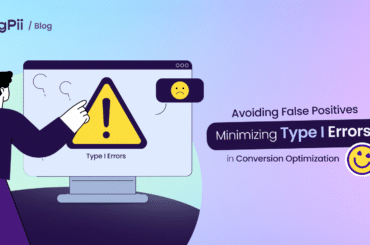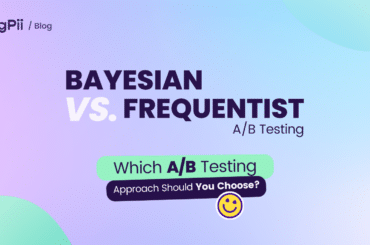How big is your business? Is it a small enterprise, a large enterprise, or is it somewhere in-between?
What kind of WordPress site does your business have?
Is it a lead gen website, an e-Commerce, or a SaaS website?
Regardless of the type of WordPress site you have, you need to know why users behave the way they do on your site.
In other words, enhancing your site’s conversion rate is a mission impossible if you don’t really know which web elements are working and which ones are not.
All I’m saying is you need a platform, or maybe a WordPress plugin, that can help you understand how people interact with every element on your WordPress site.
You can do this with FigPii.
Using FigPii to Improve Your WordPress Blogging Sites
Suppose you have a blogging website, and you want to improve your site’s conversion rate, here’s how you can do it using FigPii:
Launch FigPii Heatmap on your WordPress site:
At FigPii, we have 3 types of WordPress heatmaps:
Click Maps: display the areas of the website where visitors click. They help track on-page user engagement across the website.
Move Maps: focus on where users navigate their mouse on the WordPress site.
Scroll Maps: show how far down on a page someone is scrolling.
You can launch any of these WordPress heatmaps after every blog post you publish, and monitor how far the page users are scrolling and where they are clicking.
For example, Reza Jalaei, from FigPii, published an article about doing quality assurance for A/B testing. He launched a click WordPress heatmap and a move WordPress heatmap afterward to track its performance and effectiveness on the website.
Based on the WordPress heatmap, it seemed like everyone who interacted with the page didn’t interact with any part of the article except for the screen sizes part. In this part, he was stating which devices and which screen sizes you should be using when doing quality assurance, based on his experimentation experience. It seemed like people were more interested in this part.
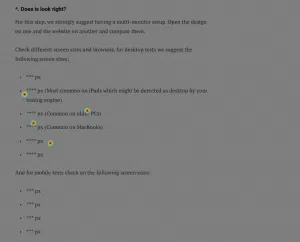
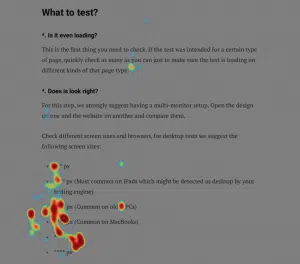
This is considered useful information because once you know this, you can maybe expand and write a follow-up article about which devices to use while doing quality assurance for A/B testing, which will help you in perfecting your content for your user base.
Launch Session Recordings on FigPii:
The same thing goes with the session recordings, you can see how users interact with your blogs.
First, let’s explain what are session recordings, or session replays. They are recordings of users’ screens from when they first visit your website until they leave it.
Now, let me give you an example to understand how do they work. In my first blog in the weekly series ‘Sherine’s Journey With FigPii’. When you open it, you will find a subscribe pop-up sidebar at the beginning of the blog.

It would be useful in this case, for example, to see how users are interacting with it, if it is failing, or if no one is joining our mail list. So, if we found out that they aren’t paying it any attention, the question here will be: Why aren’t they?
Right here, we can try and fix that by using our A/B testing engine, for example.
Launch an A/B test on FigPii:
A/B testing is an experiment conducted to compare between two versions of a webpage or app, which are shown to users randomly, to determine which one performs better.
A/B testing engine can be used to decide between 2 headlines for a blog for example, or between 2 menu options, or in the case mentioned above, between two different subscribe pop-up sidebars.
So, how does A/B testing works on FigPii?
When you are launching an A/B test on FigPii, it has four variations. There is the original one; the control (which is the existing website), then there are the 3 different new ideas you have. We send each variation to 25% of the traffic randomly. FigPii’s backend decides which one goes to who, then you can monitor how users are interacting with each option.
Read more: Heatmaps for SMBs
Using FigPii to Improve Your WordPress SaaS Sites
The way you use session recordings on a blogging website is the same way you use them on a SaaS website. The idea is the same: understanding what users do on your site.
Session recordings can show you how your visitors interact with your landing page. Also, they can help you in tracking users’ actions in detail, from scrolls to clicks. Moreover, they will assist you in finding bugs and any usability issues on your website.
Here’s an example of how useful session recordings and WordPress heatmap are. Recently, we updated our FigPii website’s main page by analyzing WordPress heatmap and session recordings. However, it didn’t go well with the first trial, why?
First of all, people were trying to view other companies that are using us but they couldn’t. Also, they weren’t interacting with the different things we have added to the page.
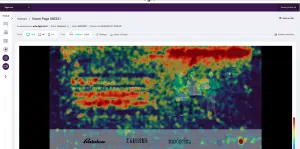

So, what we did was redesigning it again, we tried explaining the page more visually. For instance, we expanded the section containing companies using FigPii and moved up their reviews, and voilà, it worked.
Now, more people are clicking on our pricing page, for example.

All of these apply to other types of websites too, whether e-commerce, lead generation, etc… As the main idea is the same, you analyze data and come up with ideas.
Read more: How to identify user patterns from session recordings?
Using FigPii to Improve Your WordPress Ecommerce Sites
Polls are generally the last step before you launch an A/B test or the step after you have launched the failed A/B test. They help you ask users specific questions.
In the below screenshot for an example, on this page for ‘Decked’ website, as soon as you try to exit the page, this poll from FigPii shows up.
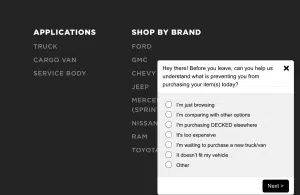
Here we have specific questions for the users, just to understand why they aren’t buying anything? Why they are leaving?
This can help you confirm your previous hypothesis, like for instance that they aren’t buying because they will purchase the same product from a cheaper online store, or because it is too expensive.
So, in this case, when they aren’t buying from you, you ask them where are they buying from and list the places, like in the screenshot below.
When it comes to a blog website, think of it this way. For example, you ask them when they are about to leave your website, after just 10 seconds of being there, questions like:
- Did you find everything you were looking for?
- How else could we have helped you?
- What kind of content do you want to see more? and so on.
These kinds of questions can help you shape your content.
Another example from Invesp. A few years ago, they weren’t sure why people were visiting their blog. They had a lot of traffic, but they still didn’t know why these users are there.
That’s why they launched a poll asking ‘what brings you to our website?,’ along with options like ‘to learn about conversion optimization,’ ‘to learn about marketing,’ and ‘to hire Invesp.’
The results were that no one was coming to hire them, most of them were there to learn about conversion optimization and marketing. Here, they came to the realization that they need to work more on these kinds of articles, which means getting more visitors.
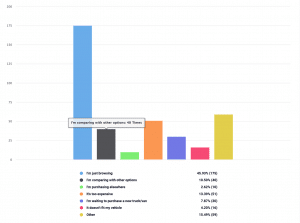
However, on another important note when it comes to polls, Reza says:
One thing about polls that needs to be understood, is that users hate pop-ups. Usually, polls have a low response rate. So, when you launch a poll, you can’t run it on your website for a long time because that’s going to anger your users. So, you need to know the questions you want to ask beforehand and you need to know why are you asking them. Just run them for a short period and as soon as you get the needed information, pause it.
So, after much clarification of how FigPii can be useful for your WordPress website, the only question remaining here is…
How to Integrate the WordPress Site With FigPii?
It is really simple. Here is what you need to do:
- Select Add New within your WordPress Plugin menu.
- Install the official FigPii plugin. By searching for “FigPii”, you should find the official FigPii Plugin in the results!
- Activate the plugin. You should be able to see the Active button after clicking on install but if you don’t see it you can navigate to your installed plugins, search for “FigPii” and click on Activate.
- After installing and activating the FigPii plugin, look for FigPii on the side menu. You can navigate to your FigPii plugin setting by clicking on FigPii from the side menu.
- Find your FigPii Access Key. You can navigate to your domain dashboard to find your key Domain Dashboard.
- Paste your access key within the FigPii access key box and click on Save Settings!
- Wait for a while for us to detect your activation or activate your tracking code manually.
For more information and help, check this guide.
After integrating, you will have access to all of FigPii tools installed in WordPress, including WordPress heatmaps, session recordings, onsite polling, and A/B testing. You can also get access to recommendations, which is artificial intelligence analyzing your data and telling you what to do to improve your website.
Wrapping Up, Why Again Use FigPii for Your WordPress Site?
You might be asking yourself now, saying other tools do the same thing that we do, so what is the difference between them and us? What will make you choose FigPii?
Good questions!
First of all, FigPii has all the tools in one place, heatmaps, session recordings, A/B testing, polls, and recommendations. You don’t need to jump between different tools in different places. Your whole conversion rate optimization is just all there in one tool.
Second, we don’t just serve big enterprises, we also work with medium and small businesses for reasonable and affordable prices.
Why do we work with all businesses at such prices? As Reza says:
In our philosophy, there is nothing wrong with experimentation. Experiment as much as you want with an affordable price, and you are going to see real results. Even on small websites, tailoring the experience to your users and testing different things, is going to have a positive impact on your conversions.
That’s it! Hope you enjoyed this one.
Until next time.



